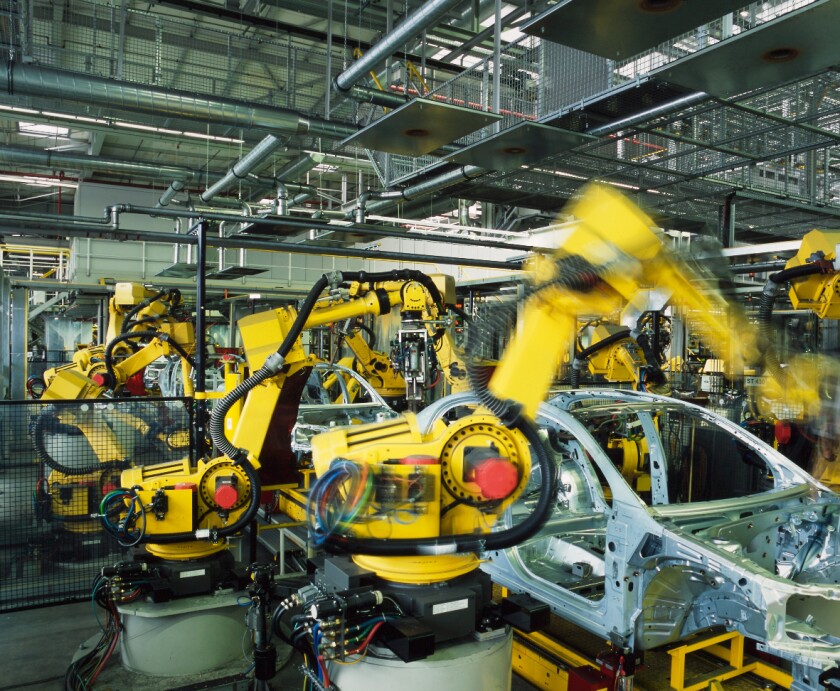Almost two years since the COVID-19 outbreak and the ensuing uncertainties and turmoil that international companies were confronted with, at the beginning of 2022 the world economy saw a silver lining when most countries lifted restrictions on the public and the economy.
Even though travel times of freight containers were still higher compared with 2019 and the supply of some primary products was still hampered by supply bottlenecks, many international companies had factored in the ‘new normal’ of extended delivery times and supply shortages into their supply chain management and expectations about overall business development improved significantly.
The optimistic view did not last long.
By May 2022, the situation on the world markets had, again, deteriorated dramatically. The Russia–Ukraine war, geopolitical tensions between the US and China, and the COVID-related shutdowns in Shanghai, China’s most important economic area and the world’s largest port in terms of cargo volume, again increased freight prices and cargo travel times many times over.
Russia’s invasion of Ukraine, in particular, has caused a massive disruption in European land-based supply chains, with an immediate impact on the European economy.
The war has isolated Russia politically and economically. Not only are companies seeking to bypass Russian railways that connect East Asia to Europe, thereby putting additional pressure on global sea freight routes, but Russia is also one of the key suppliers of fossil fuels for Europe. Due to imposed sanctions, prices for oil and gas have therefore experienced significant increases in the short term. The EU is also highly dependent on Russia for iron products and steel, metals and ores. Ukraine is the main supplier of wiring harnesses to the European automotive industry.
These dependencies put the business models of European companies at risk, as exemplified by partial closings of German steel mills due to high electricity prices or stopped assembly lines in some of the major European factories. Nearly 300,000 companies in the US and Europe have supply chain linkages to Russia and/or Ukraine. These companies have to make a short-term decision on how and where to source primary goods and commodities via alternative supply chains.
A hard-hit sector
Companies from the industrial products and construction (IP&C) sector are particularly impacted by such disruptions. The IP&C sector is often characterised by long and complex supply chains, by just-in-sequence or just-in-time production models with low inventory levels, and by relatively high fixed asset intensities due to capital-intensive and technology-intensive manufacturing plants and machinery. All these factors make it inherently difficult for IP&C companies to quickly adapt supply chains.
As a result, companies from the IP&C sector are increasingly trying to shorten and diversify their global supply chains in an attempt to achieve greater supply chain resilience. This development slows down the trend of serving more and more regions of the world from production units in China.
One new trend that can be observed is the attempt to use Chinese production facilities mainly to serve the (still growing) local Chinese market, while other regions of the world are served by newly established or expanded local production facilities. Thereby, IP&C companies not only reduce dependencies on China as a key manufacturing location or other long, land-based supply chains but also reduce their carbon dioxide footprints due to reduced shipping distances and facilitate oversight over their supplier’s ESG adherence, thus ensuring compliance with new supply chain due diligence acts such as the German Lieferkettensorgfaltspflichtengesetz and the proposed EU supply chain law, which will probably be passed in 2023 and affect large corporations in particular.
Such changes to global supply chains can create a wide range of issues to be solved by companies’ tax departments, as exemplified in the following case study.
Case study
Status quo supply chain
An exemplary IP&C group, headed in Germany, is engaged in the production of industrial drives and gears as well as the associated control units. The group historically had several production sites in Europe, the United States and China.
Since the 2000s, Chinese production sites have expanded significantly and are now serving more than 50% of the global demand, while sites in Europe and the US have not seen much growth in the past two decades in terms of output. While the main research and development (R&D) activities are conducted on an HQ level in Germany, some R&D activities have been performed in China since 2018 and have resulted in local IP. Related to this, the group has gained high-tech status under China’s High and New Technology Enterprise (HTNE) regime and has benefited from the associated tax incentives.
Distribution takes place via a global network of limited risk distributor entities that source their products from the HQ and directly from (licensed) manufacturers in China. The group’s customers are mainly factory operators that need the drives and gears for their product processes. These customers are increasingly challenging the group to raise its efforts to reduce the products’ carbon footprint and to provide extensive ESG documentation.
Impact of supply chain disruptions
COVID-related shutdowns, a shortage of containers, high shipping rates and the mid-term goal to reduce its carbon footprint have led the IP&C group to reconsider some of its global supply chains. As part of this, the group is planning to implement three key measures:
Strengthen the existing manufacturing plants in Europe and the US, with the aim to serve European and US markets to a larger extent from these plants;
Use Chinese manufacturing capacities mainly to serve the growing demand from Chinese customers; and
Establish a new plant in another Asian jurisdiction (location still to be determined) to serve other Asian customers.
Tax implications
The measures considered by the group trigger several tax-related questions that should be proactively addressed by the tax department.
1. Relocation of manufacturing capacities from China
Shifts in production capacities are considered a necessary step to secure the group’s production capability in the short term due to current supply chain distortions as well as in the midterm due to ESG-related pressure from customers. From a tax perspective, the following issues should be analysed at an early stage of the planning phase:
Are the Chinese entities entitled to an arm’s-length compensation related to the reduction of their scope of activities?
Are tangible/intangible assets transferred (or made available) by the Chinese entities to other manufacturing sites as part of the reallocation of geographical responsibilities to the manufacturing sites?
Is there a risk of (retroactively) losing benefits related to China’s HTNE regime due to the reduction of the scope of the Chinese manufacturers?
Does a relocation of certain production capacities from China to Europe and the US create other exit considerations from a Chinese perspective?
How will the shift in the manufacturing footprint affect the group’s effective tax rate and withholding tax profiles due to the relatively higher involvement of entities in Europe and the US compared with the license manufacturers in China?
2. Choice of a new manufacturing site in Asia
The choice of a new additional jurisdiction for manufacturing activities in Asia should primarily follow business considerations such as political stability, supply chain resilience, availability of qualified workforce, established infrastructure and an overall supportive environment for new industrial production sites. Nevertheless, the tax functions should identify potential tax obstacles and costs at an early stage.
In this phase, tax departments can add value to the decision-making process by providing insights into expected tax costs for each potential target jurisdiction and present rankings with regard to available tax regimes.
Such analyses and rankings should, inter alia, consider the following aspects:
Nominal and expected effective tax rates;
Withholding tax rates related to license payments, interest payments and dividends;
Treatment of start-up costs/losses;
R&D grants and incentives;
Import/export duties;
Compliance of transfer pricing (TP) regimes with OECD standards;
Predictability of tax authority actions in tax audits;
Availability of (unilateral) advance pricing agreements (APAs) with regard to legal entity characterisations and remunerations;
Availability of double taxation treaties with the jurisdictions of major transaction partners, including the binding arbitration within such treaties; and
A tax regime related to employee secondments and permanent establishments, which can be particularly relevant for foreign support in the start-up phase of the new site.
3. TP set-up
In the course of the relocation of production capacities within Asia and the expansion of production in Europe and the USA, implications for the TP policy of the new manufacturing facility as well as already operating manufacturers should be assessed.
On the one hand, the classification of the future manufacturing activities of the Asian company must be considered. Operating models of manufacturers – that is, toll manufacturers, contract manufacturers and license manufacturers – are characterised by different functional and risk profiles and are remunerated via different mechanisms accordingly. The setting up of new production facilities therefore provides opportunities to set up new remuneration mechanisms (depending on the jurisdiction’s tax regimes) but should not create inconsistencies with regard to the existing TP set-ups in the group.
On the other hand, it is vital to analyse existing TP policies with regard to their overall results in terms of profit allocations across the group. In light of the arguably increased importance of supply chain-related activities, a readjustment of relative remunerations might be necessary.
If the supply chain function is performed by the HQ (or by a separate supply chain principal company), the entities’ value contribution might have increased in the current environment, which should be reflected in their respective remunerations. Allocating a higher return to such activities will lead to corresponding reductions for other functions’ remunerations, such as potentially decreased manufacturing returns, while ensuring these are still within the applicable arm’s-length ranges.
4. Other tax and TP considerations
In addition to the above considerations regarding the group’s TP set-up, the current distortions in global supply chains may have a variety of other effects for the exemplary IP&C group in the case study.
During the past few months, global inflation rates have reached a level not seen in industrialised countries for a very long time. Parallel to the examination of whether contracts and/or prices with suppliers and end customers must be readjusted, it is also important to review the group’s internal TP policies to ensure compliance with the arm’s-length principle. Contract manufacturers, for example, are usually remunerated on a cost-plus basis and a sharp and unexpected increase of prices for raw materials, energy or other inputs from third-party suppliers might lead to unexpected returns at year end.
Limited risk distributors are usually compensated with a low but stable margin. Increasing market prices might lead to results that are not compatible with this goal at year end, especially if transfer prices stipulated in intercompany agreements cannot keep up with growing market prices.
Transfer prices (or intercompany interest rates) set with reference to externally observed comparable uncontrolled prices (CUPs) should also be closely monitored for fluctuations in market prices in the current environment and the comparability of such prices should be observed.
Resulting recommendations for tax managers
As some of the disruptions in global supply chains are expected to last for the foreseeable future and with increasing ESG requirements, continuous change in supply chains is expected to be the new normal in the IP&C industry. This creates significant challenges for tax departments.
The decentralisation and readjustment of supply chains have significant effects on the value creation of the group. Tax managers therefore need to have flexible tax policies and processes to be able to quickly adapt. They need to closely monitor regulatory changes related to trade sanctions, export bans and ESG-related tax changes.
At the same time, tax departments can provide value to their respective organisations by having a clear view of the global tax regimes available for new supply chain set-ups. Having a clear technology roadmap and tools in place will help tax departments to increasingly free up resources otherwise utilised for day-to-day tax management tasks and allocate additional resources to strategically important and value-adding aspects. After all, the readjustment of supply chains also gives rise to opportunities.
Tax departments, if properly prepared, can help reduce risks and damages for their group, contribute to increasing supply chain resilience, and help in accelerating the move to more sustainable business models.














